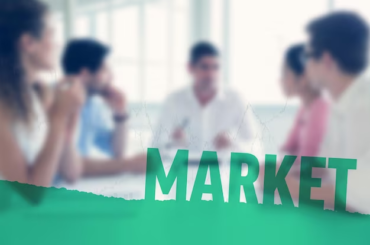Contract for Difference (CFD) trading provides traders with opportunities to speculate on various financial instruments without owning the underlying assets. One of the key aspects that make CFDs attractive to traders is the ability to trade on margin and utilize leverage. In this blog post, we will explore the importance of margin and leverage in CFD trading, highlighting their benefits and considerations. Understanding these concepts is crucial for effectively managing risk and maximizing potential returns in CFD trading. CFDs usually work on the concept of “leverage product”. By leverage, we mean to say that you gain the freedom to unlock complete exposure to large positions without actually buying the complete cost of the asset.
Say you wish to buy 100 shares of Company B. If you buy those shares according to the standard trade, you will have to pay the buying price of these full 100 shares immediately. Whereas, through CFDs, you have the benefit to leverage this position of 100 shares by just putting around 4-6% of the total cost.
Also, whenever you intend to buy a specific position of any financial asset, you are supposed to pay/deposit a tiny percentage of the full value of your trade which is termed as “trading on margin”. This position has the capacity to magnify your returns if the point in price movements takes place in your favor. Similarly, it also has the exact same power to increase your losses if things end up against your move. However, your losses & profits are calculated as per the total value of your position.
The Significance of Margin and Leverage in CFDs:

1. Increased Market Exposure
Margin and leverage allow traders to gain increased exposure to the financial markets. By trading on margin, traders can open larger positions with a smaller initial investment. Leverage amplifies the trading power, enabling traders to control a larger position size than their available capital. This increased market exposure can potentially lead to higher profits if the trades are successful.
2. Capital Efficiency
Margin and leverage enhance capital efficiency in CFD trading. Instead of tying up large amounts of capital to open positions, traders can allocate a smaller portion of their capital as margin. This enables them to diversify their trading activities and engage in multiple trades simultaneously. By utilizing leverage, traders can effectively utilize their available capital to access a broader range of trading opportunities.
3. Potential for Higher Returns
Leverage can magnify both profits and losses in CFD trading. While this introduces higher risk, it also provides the potential for higher returns. By leveraging their positions, traders can amplify their gains if the market moves in their favor. However, it is crucial to exercise caution and employ risk management strategies to mitigate potential losses, as losses can be magnified as well.
4. Flexibility in Trading Strategy
Margin and leverage offer traders flexibility in implementing their trading strategies. Traders can tailor their position sizes and risk levels based on their individual trading plans and market expectations. They can choose to utilize higher leverage for short-term and volatile trading opportunities or opt for lower leverage for more conservative and long-term positions. This flexibility allows traders to adapt to different market conditions and adjust their strategies accordingly.
5. Risk Management Considerations
While margin and leverage provide opportunities, they also come with inherent risks. Traders must be aware of the potential downside and carefully manage their risk exposure. High leverage can amplify losses, and market fluctuations can quickly erode trading capital. It is crucial to establish appropriate risk management techniques, such as setting stop-loss orders and implementing proper position sizing strategies, to protect against adverse market movements.
Conclusion
Margin and leverage are important in CFD trading because they provide enhanced market exposure, capital efficiency, and the opportunity for larger returns. However, traders must exercise caution when dealing with margin and leverage and implement appropriate risk management measures. Successful CFD trading requires a thorough understanding of margin needs, maintenance margins, and the impact of leverage on trading positions. By utilizing margin and leverage wisely, traders can capitalize on market opportunities while effectively managing risk and safeguarding their trading capital.





